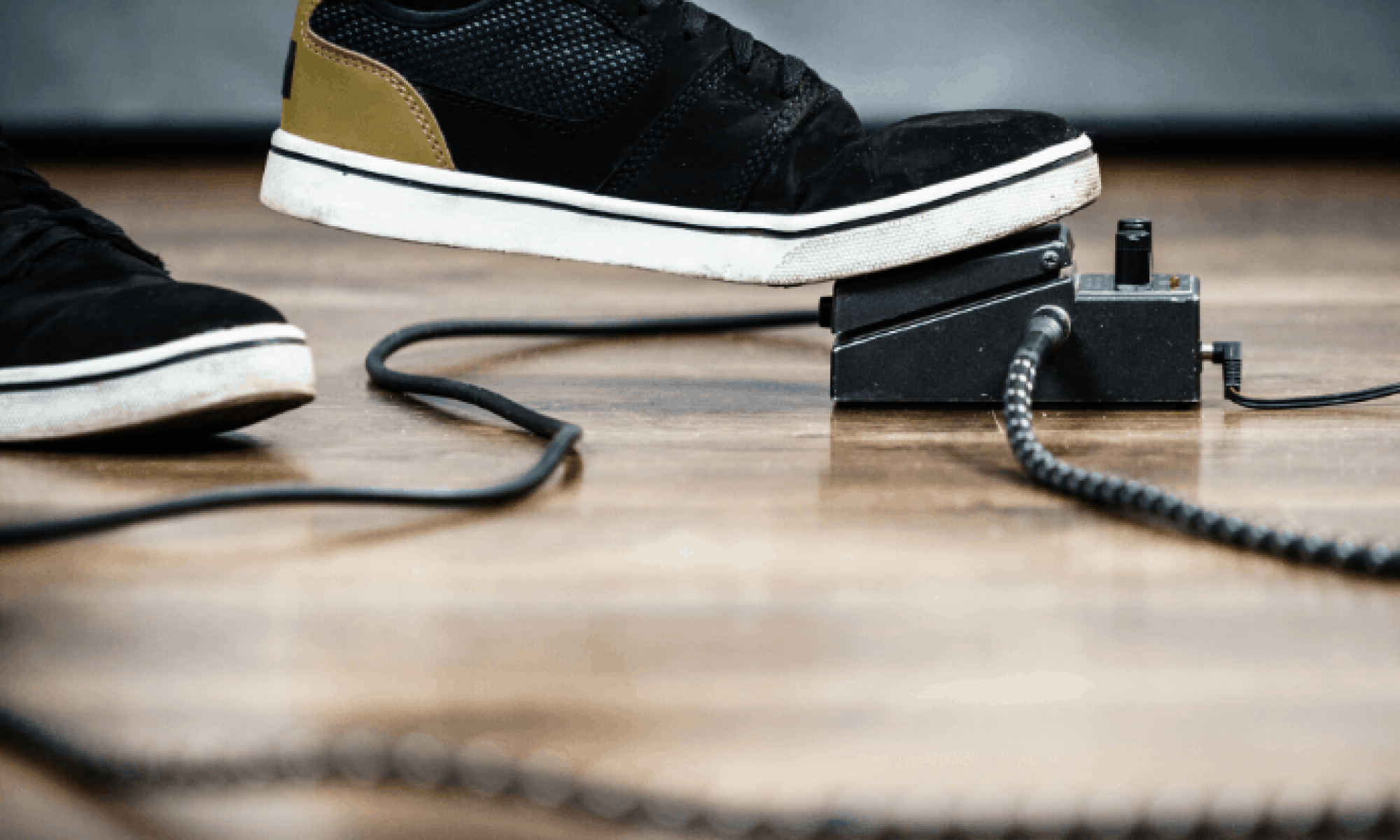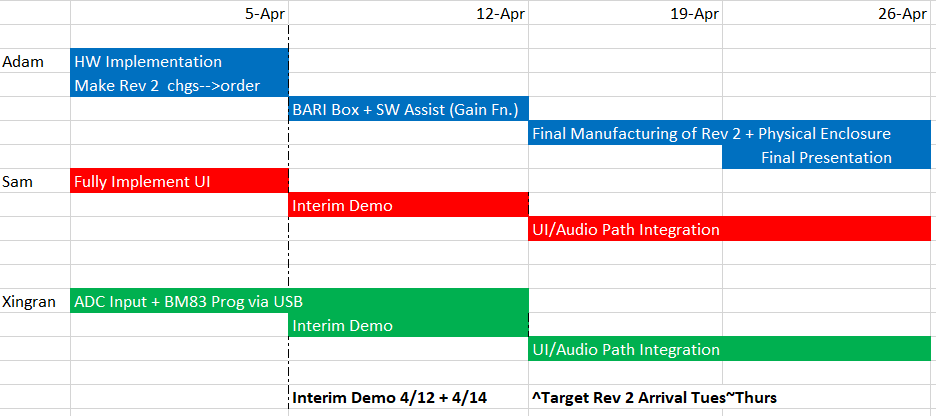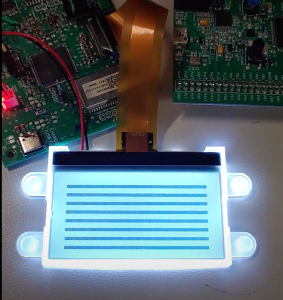This week I have successfully implemented the audio in and out of our board.
I can input music through the XLR/ 1/4 inch jack to our board, sample it through ADC, process it so that one input channel is selected as both the L and R channel of output, and output it to the BM83 and finally hear it in my Bluetooth speaker or earphone.
Furthermore, I can control the ADC’s internal amplifier to adjust the gain on the signal. Currently I find that 8dB gain produces a reasonable volume level with clearest sound. Our on-board pre-amp was previously having about 0~2dB gain, it was faulty and Adam replaced it with a new one just recently, so I haven’t tested setting both our pre-amp circuit gain and the ADC gain to get the best possible overall gain level and music quality, I can do that next week.
As for signal quality, it is still quite noisy right now. I am using the rev 1 board which has some temporary soldering that could introduce a lot of noise, so we hope that noise will be less on our final board. I will be testing our new board next week, and integrate the UI module in so that the user could select the gain on the LCD screen, while our team will together try to increase the signal quality as much as we can.







